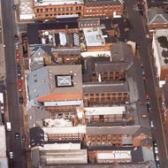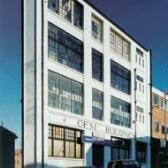Region: West Midlands
Local Authority: Birmingham
Owner Type: Local Authority,English Heritage
Summary: A Detailed HAA led to the consolidation of three separate conservation areas into a single conservation area encompassing the whole quarter. Subsequently a further 120 buildings in the quarter were statutorily listed as of special architectural and historical interest and in 2005 Birmingham City Council published (as Supplementary Planning Guidance) a design guide for the area. These measures were accompanied by the adoption of planning policies which have been successful in protecting the unique character of the quarter and its fragile manufacturing and craft base whilst permitting controlled new development on its periphery.
Description: The Jewellery Quarter is an exceptionally complete historic industrial quarter of international importance covering an area of 94 hectares (230 acres) approximately 15 minutes’ walk north and north-west of Birmingham’s Victoria Square. It originated in the late 18th century as a planned development of brick townhouses and surrounding villas built for the town’s professionals, landowning classes and industrialists. By the early 19th century the character of the area had changed with the construction of smaller houses and workshops turning out a wide range of small metal items. Within 50 years a few larger factories, small-to-middling scale jewellery factories and workers’ housing had been added to the mix. The second half of the 19th century witnessed the rapid expansion of the jewellery trade in the area and culminated in the densely built cluster of jewellery-related and metal-working buildings and former houses we see today.
Issue: During the 1990s the area came under increasing development pressures, particularly for the conversion of former workshops and factories into inner-city apartments, resulting in a requirement for an assessment of the character of the quarter to inform its protection and future management.
Strategy: An Outline Assessment confirmed that the area was of considerable architectural and historical significance, but, owing to the built-up street frontages and difficulties ascertaining the degree of survival of rear workshops, it quickly became apparent that a Detailed Assessment would be necessary to obtain a sufficiently full understanding of its development and character. The results of the Outline Assessment were combined with further documentary research and analysis of newly-commissioned aerial photography to select 50 of the best preserved buildings of varying type and date for external and internal investigation. This was accompanied by further research into the industrial processes, specialist machinery and the underlying economic basis of the quarter. It emerged as an area of exceptional significance not just in visual terms but as a unique survival of a historic working industrial quarter operating in the same buildings, and in many cases using the same processes and machinery as it did over 150 years ago.
Outcome: The Detailed assessment had a number of outcomes. Following public consultation in 2000 three separate conservation areas were consolidated into a single conservation area encompassing the whole quarter. The public consultation was accompanied by a major exhibition and the publication by English Heritage of an accessible guide to the area. In 2002 English Heritage published a fuller account of the area including an analysis of its significance in a national and international context. Subsequently a further 120 buildings in the quarter were statutorily listed as of special architectural and historical interest and in 2005 Birmingham City Council published (as Supplementary Planning Guidance) a design guide for the area. These measures were accompanied by the adoption of planning policies which have been successful in protecting the unique character of the quarter and its fragile manufacturing and craft base whilst permitting controlled new development on its periphery.
Keywords: ASSESSMENT AND CHARACTERISATION
© English Heritage


